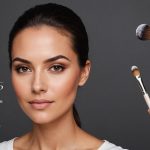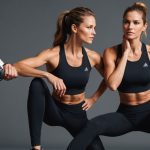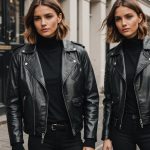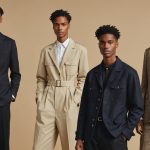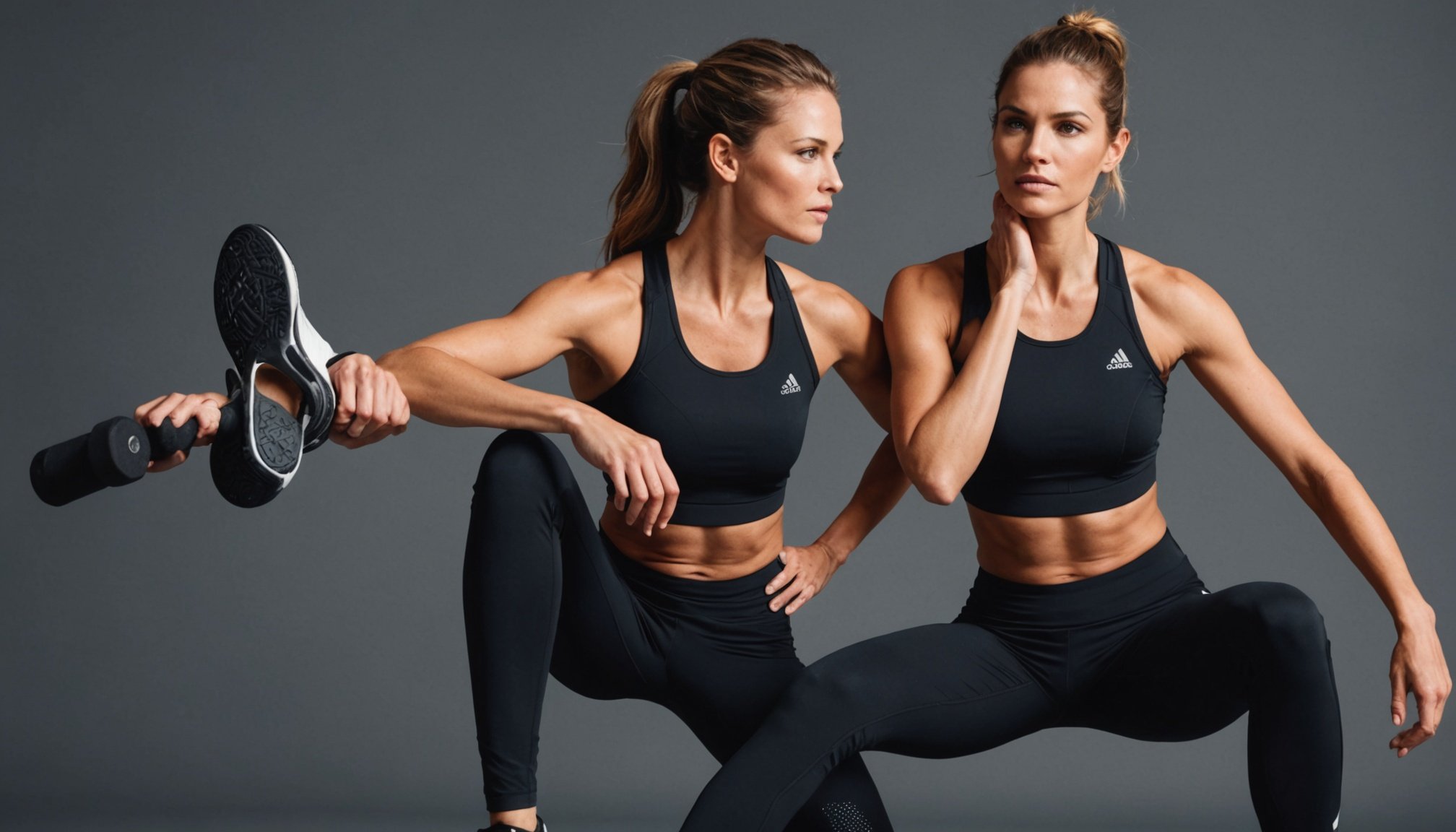Ultimate Guide to the Toughest Fabrics for Women’s Activewear: Discover Unmatched Durability
When it comes to women’s activewear, the fabric choice is crucial for both performance and comfort. In this guide, we will delve into the best fabrics that offer unmatched durability, comfort, and performance, making them ideal for your most intense workouts.
Understanding the Importance of Fabric Choice
The fabric of your activewear is not just about aesthetics; it plays a significant role in your workout experience. Here are a few reasons why choosing the right fabric is essential:
In parallel : Transform your morning ritual: unlock enhanced focus with expert mindful breathing techniques for meditation
- Comfort: The right fabric ensures that you stay comfortable throughout your workout. Fabrics that are breathable, moisture-wicking, and soft against the skin can make a significant difference.
- Performance: High-quality fabrics can enhance your performance by providing the necessary support, flexibility, and sweat management.
- Durability: Durable fabrics mean your workout clothes will last longer, saving you money and reducing the need for frequent replacements.
- Health: Some fabrics can be harmful to your skin, especially during intense workouts. Non-toxic and eco-friendly fabrics are a healthier choice.
Best Fabrics for Women’s Activewear
Organic Cotton
Organic cotton is a great choice for those who prefer natural fabrics. Here’s why:
- Breathability: Organic cotton allows for good airflow, keeping you cool during workouts.
- Softness: It is incredibly soft and gentle on the skin.
- Eco-friendly: Organic cotton is grown without the use of toxic pesticides or synthetic fertilizers, making it an eco-friendly option.
- Certification: Look for GOTS (Global Organic Textile Standard) certification to ensure the cotton is truly organic[1][3].
Example: Brands like AllWear use organic cotton to create durable and comfortable activewear. Their organic joggers and bamboo bra tops are highly praised for their soft feel and long-lasting quality[3].
Also to discover : Proven Natural Methods to Ease Anxiety Before Important Meetings or Presentations;232Essential Tips for Protecting and Nurturing Sensitive Eyes: A Comprehensive Guide
Tencel Lyocell
Tencel lyocell is another natural fabric that stands out for its performance and sustainability.
- Moisture Wicking: Tencel lyocell has excellent moisture-wicking properties, keeping you dry and comfortable.
- Breathability: It is highly breathable, allowing for good airflow.
- Softness: Known for its buttery soft texture, Tencel lyocell feels luxurious against the skin.
- Eco-friendly: Produced from wood pulp, Tencel lyocell is a sustainable fabric choice[1].
Hemp
Hemp is a powerhouse of sustainability and durability.
- Durability: Hemp fabric is incredibly durable and long-lasting.
- Breathability: It allows for good airflow and has natural moisture-wicking properties.
- Eco-friendly: Hemp is a highly sustainable crop that requires less water and pesticides compared to other crops.
- Comfort: Hemp fabric is soft and comfortable, making it ideal for activewear[3].
Example: Jungmaven uses hemp to create colorful and comfortable activewear. Their hemp-made clothing is praised for its softness and durability, even though it may not have the same level of spandex as other fabrics[3].
Bamboo
Bamboo fabric is another natural option that excels in several areas.
- Breathability: Bamboo fabric is highly breathable and moisture-wicking.
- Softness: It is incredibly soft and gentle on the skin.
- Eco-friendly: Bamboo is a highly sustainable crop that requires minimal water and pesticides.
- Durability: Bamboo fabric is durable and long-lasting[1].
Example: Boody uses bamboo viscose to create sustainable and comfortable activewear. Their bamboo fabric is known for its breathability, moisture-wicking properties, and softness[1].
Recycled Polyester
For those who prefer synthetic fabrics but want an eco-friendly option, recycled polyester is a great choice.
- Moisture Wicking: Recycled polyester has excellent moisture-wicking properties.
- Durability: It is durable and long-lasting.
- Eco-friendly: Made from recycled materials, it reduces waste and the need for new raw materials.
- Certification: Look for OEKO-TEX certification to ensure the fabric is free from harmful substances[1][3].
Example: Wolven uses OEKO-TEX-certified recycled polyester to create non-toxic and sustainable activewear. Their clothes are known for being quick-drying, odor-resistant, and very soft[1].
Key Features to Look For in High-Performance Fabrics
When choosing the best fabrics for your activewear, here are some key features to look for:
Moisture Wicking
Moisture-wicking fabrics are essential for keeping you dry and comfortable during workouts. Fabrics like Tencel lyocell, bamboo, and recycled polyester excel in this area.
Breathability
Breathable fabrics allow for good airflow, keeping you cool and comfortable. Organic cotton, hemp, and bamboo are known for their breathability.
Softness
Soft fabrics ensure that your workout clothes feel comfortable against your skin. Tencel lyocell, bamboo, and organic cotton are praised for their softness.
Durability
Durable fabrics mean your workout clothes will last longer. Hemp, bamboo, and recycled polyester are known for their durability.
Eco-Friendliness
Eco-friendly fabrics are made from sustainable materials and produced with minimal environmental impact. Organic cotton, hemp, bamboo, and recycled polyester are all eco-friendly options.
Comparison Table: Best Fabrics for Women’s Activewear
| Fabric | Moisture Wicking | Breathability | Softness | Durability | Eco-Friendly | Certification |
|---|---|---|---|---|---|---|
| Organic Cotton | Good | High | High | Medium | Yes | GOTS |
| Tencel Lyocell | Excellent | High | High | Medium | Yes | – |
| Hemp | Good | High | Medium | High | Yes | – |
| Bamboo | Excellent | High | High | High | Yes | – |
| Recycled Polyester | Excellent | Medium | Medium | High | Yes | OEKO-TEX |
Practical Insights and Actionable Advice
Choosing the Right Fabric for Your Workout
- High-Intensity Workouts: For high-intensity workouts, look for fabrics with excellent moisture-wicking properties like Tencel lyocell, bamboo, or recycled polyester.
- Low-Intensity Workouts: For lower-intensity activities like yoga or Pilates, natural fabrics like organic cotton or hemp can provide the necessary comfort and breathability.
Care Instructions
- Washing: Always follow the care instructions provided by the brand. Natural fabrics may require gentle washing, while synthetic fabrics can usually be machine washed.
- Drying: Avoid using the dryer for natural fabrics as it can reduce their lifespan. Instead, air-dry them to maintain their quality.
Layering
- Full Coverage: For full coverage, layer with long sleeves or long-sleeve sports tops paired with full-length leggings. This is ideal for workouts that require more modesty[4].
- Mid Coverage: For mid coverage, use high-waisted leggings or relaxed joggers paired with a loose hoodie or cropped jacket. This balance of breathability and coverage is perfect for strength training or casual runs[4].
- Light Coverage: For light coverage, opt for breathable oversized tees or flowy tanks paired with joggers or capri leggings. This is ideal for lighter activities like yoga or Pilates[4].
Real-Life Examples and Testimonials
Boody’s Bamboo Activewear
“I recently purchased a pair of leggings and a tank top from Boody, and I couldn’t be happier. The bamboo fabric is so soft and breathable, and it has great moisture-wicking properties. I’ve worn them for both yoga and running, and they’ve performed exceptionally well. Plus, knowing that the brand is committed to sustainability makes me feel even better about my purchase.”[1]
Jungmaven’s Hemp Activewear
“I was a bit skeptical about hemp activewear, but Jungmaven’s products have won me over. The fabric is incredibly soft and comfortable, and it’s so durable. I’ve worn the Orosi Pocket Leggings to a vigorous Pilates class, and they felt super secure. The only thing to note is that hemp fabric doesn’t have the same level of spandex as other fabrics, so sizing down might be necessary for added support.”[3]
Wolven’s Recycled Polyester Activewear
“Wolven’s activewear is not only stylish but also incredibly comfortable. The OEKO-TEX-certified recycled polyester is quick-drying, odor-resistant, and very soft. I’ve worn their leggings for everything from running to casual outings, and they’ve performed flawlessly. The fact that they’re made from recycled materials makes them an eco-friendly choice as well.”[1]
Choosing the right fabric for your activewear is a critical decision that can significantly impact your workout experience. Whether you opt for natural fabrics like organic cotton, hemp, or bamboo, or eco-friendly synthetic options like recycled polyester, ensuring that your workout clothes are durable, comfortable, and high-performance is key.
By understanding the benefits of each fabric type and following practical tips on care and layering, you can make informed decisions that enhance your comfort, performance, and overall satisfaction with your activewear. Remember, the best fabrics are those that combine durability, comfort, and eco-friendliness, making them a worthwhile investment for any fitness enthusiast.

